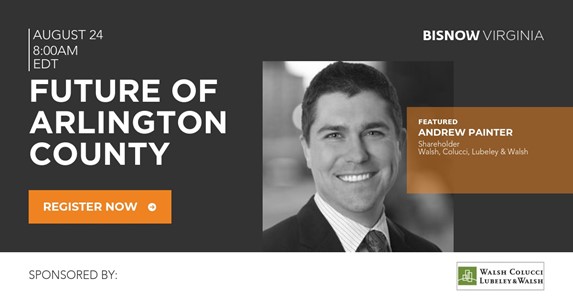On October 22, 2024, the Fairfax County Board of Supervisors approved Peterson Companies’ proffered condition amendment, concept development plan amendment, and final development plan amendment to permit a new multifamily residential building on the 4.37-acre Parkway Woods site in Fair Lakes.
Located at the intersection of Fair Lakes Parkway and Headquarters Drive, the property formerly housed the three-story Parkway Woods office building, which was constructed in 1987.
The approval permits redevelopment of the site under two building options designed by project architect DCS Design.
The first option features an approximately 400,000-square foot steel frame and concrete building with two connected towers containing 380 units served by a predominantly below-grade podium parking garage.
The second option allows a single 349,479-square foot wood frame building containing 278 units served by an above-grade wrapped garage.
Development under both options would be LEED-certified and feature high-quality architectural materials.
The project design team and, in particular, the civil engineers and landscape architects at Urban, Ltd., worked closely with Fairfax County staff on the project’s open space approach and landscaping. As a result, the project will include a series of plazas, seating, trails, and other amenities, as well as preserve a substantial buffer of mature trees along Fair Lakes Parkway. The project will also substantially exceed requirements for open space, tree canopy target, tree preservation.
The project will preserve Fair Lakes’ position as a premiere working and living environment and honors the park’s original design intent. It will provide new housing opportunities, drive the demand for commercial uses, and offer future residents direct pedestrian access to nearby retail, services, and amenities.
The zoning approval follows the Board of Supervisors’ September 10, 2024 adoption of a site-specific amendment to the Comprehensive Plan to allow residential redevelopment as an alternative use for the site.
Together, the Comprehensive Plan amendment and zoning approvals represent a major step forward in realizing Fairfax County’s longstanding attempts (which first began in 2007) to incentivize redevelopment and help Fair Lakes evolve from a predominantly suburban typology into a more walkable environment with urban residential opportunities.
Walsh Colucci shareholder Andrew Painter and land use planner Bernard Suchicital assisted Peterson Companies throughout the process.













